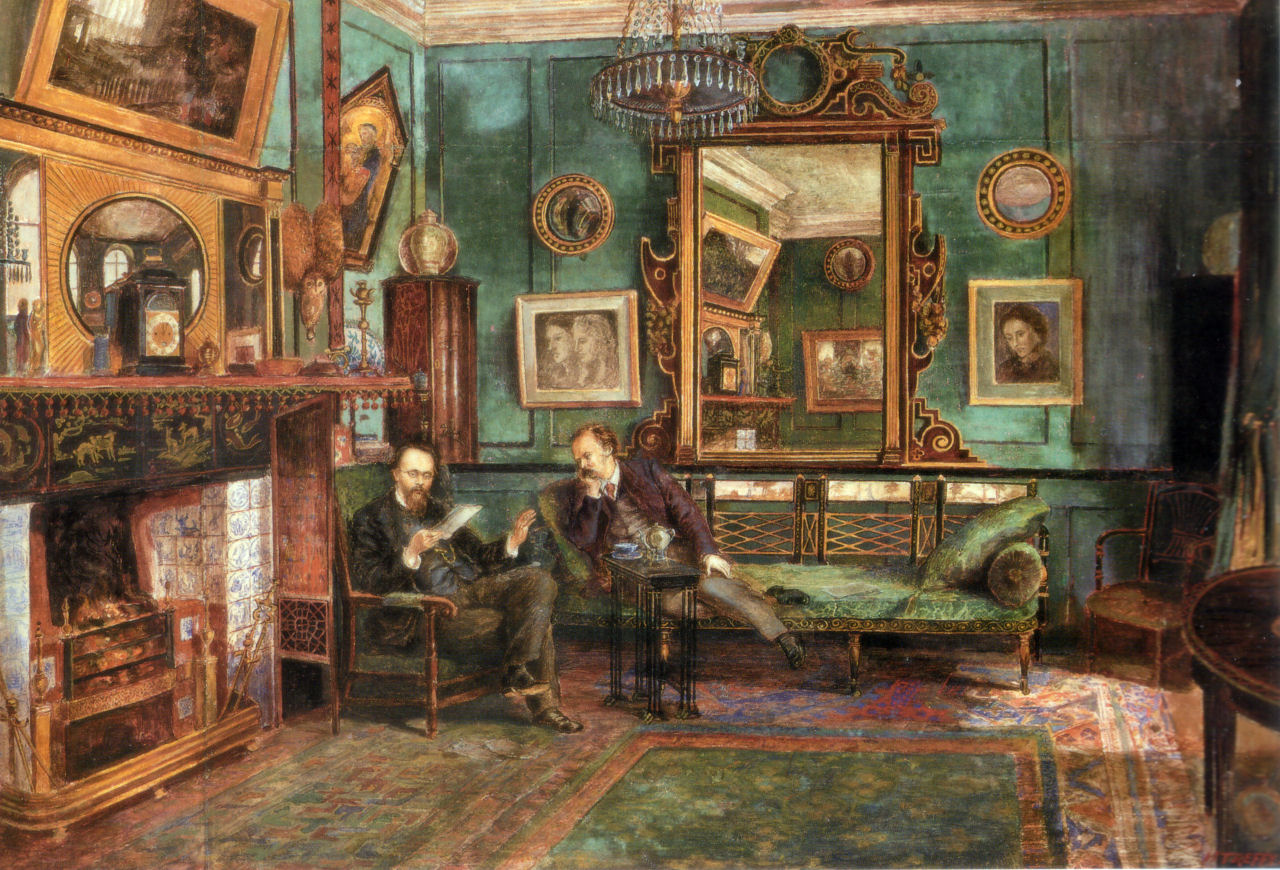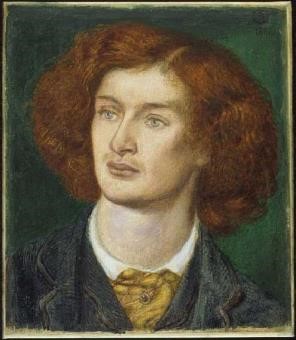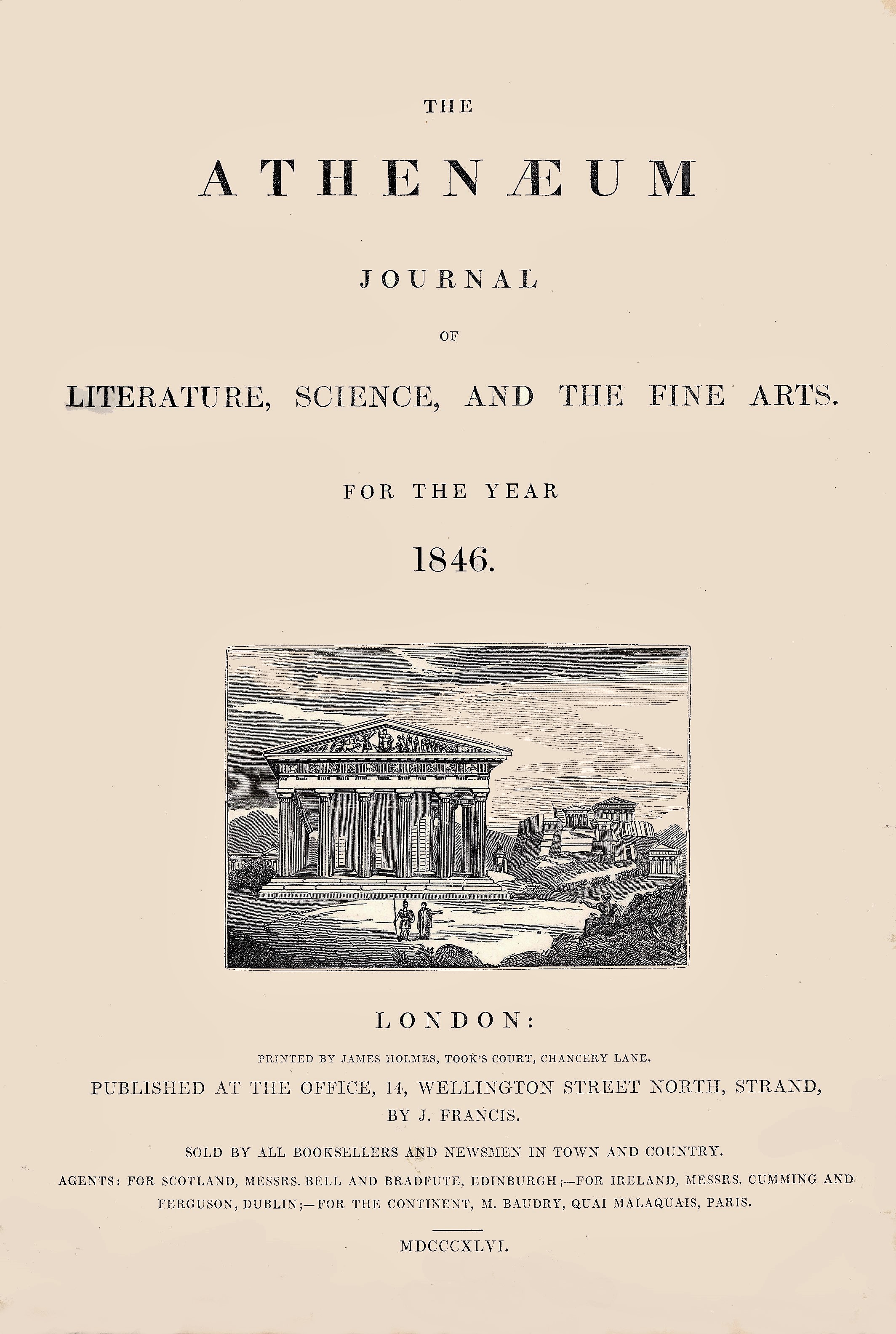|
Watts-Dunton
Theodore Watts-Dunton (12 October 1832 – 6 June 1914), from St Ives, Huntingdonshire, was an English poetry critic with major periodicals, and himself a poet. He is remembered particularly as the friend and minder of Algernon Charles Swinburne, whom he rescued from alcoholism and drug use and persuaded to continue writing. Birth and education Walter Theodore Watts was born at St Ives, in what was then Huntingdonshire. He added his mother's name Dunton to his surname in 1897. He was originally educated as a naturalist, and saw much of the East Anglian Gypsies, of whose superstitions and folklore he made careful study. Abandoning natural history for the law, he qualified as a solicitor and went to London, where he practised for some years, giving his spare time to his chosen pursuit of literature. One of his clients was Swinburne, whom he befriended in 1872. Literary contributions Watts-Dunton contributed regularly to the ''Examiner'' from 1874 and to the ''Athenaeum'' from 18 ... [...More Info...] [...Related Items...] OR: [Wikipedia] [Google] [Baidu] |
The Pines, Putney
The Pines is a Grade II listed house in Putney in the London Borough of Wandsworth, it was home to the poets Algernon Charles Swinburne and Theodore Watts-Dunton. Location The building is at 9 - 11 Putney Hill, south of the Upper Richmond Road, Transport for London bus stop Putney Station (Stop H) is outside. History and residents The building was built circa 1870 as a pair of four-storey townhouses. Theodore Watts-Dunton moved in during 1879 with his two sisters, brother in-law, and nephew. Watts-Dunton took in Algernon Charles Swinburne until Swinburne's death in 1909. Watts-Dunton and Swinburne are seen in an image at the property in 1909 and a blue plaque erected by the London County Council on the house in 1926 reads "Algernon Charles Swinburne (1837–1909) poet, and his friend Theodore Watts-Dunton (1832–1914) poet, novelist, critic, lived and died here". Watts-Dunton lived on at The Pines for five years after his more famous companion's death in 1909 and ... [...More Info...] [...Related Items...] OR: [Wikipedia] [Google] [Baidu] |
Henry Treffry Dunn
Henry Treffry Dunn (1838–1899) was Dante Gabriel Rossetti's assistant and a painter in his own right. Rossetti Archive, accessed December 2011 Dunn's memoirs are a valuable source for the lives of the Pre-Raphaelites. He was paid to be Rossetti's factotum and to create copies of Rossetti's paintings. It has been said that the painting '''' in the was actually painted by Dunn and only "touched up" by Rossetti. Dunn left Ross ... [...More Info...] [...Related Items...] OR: [Wikipedia] [Google] [Baidu] |
Algernon Charles Swinburne
Algernon Charles Swinburne (5 April 1837 – 10 April 1909) was an English poet, playwright, novelist, and critic. He wrote several novels and collections of poetry such as ''Poems and Ballads'', and contributed to the famous Eleventh Edition of the ''Encyclopædia Britannica''. Swinburne wrote about many taboo topics, such as lesbianism, sado-masochism, and anti-theism. His poems have many common motifs, such as the ocean, time, and death. Several historical people are featured in his poems, such as Sappho ("Sapphics"), Anactoria ("Anactoria"), and Catullus ("To Catullus"). Biography Swinburne was born at 7 Chester Street, Grosvenor Place, London, on 5 April 1837. He was the eldest of six children born to Captain (later Admiral) Charles Henry Swinburne (1797–1877) and Lady Jane Henrietta, daughter of the 3rd Earl of Ashburnham, a wealthy Northumbrian family. He grew up at East Dene in Bonchurch on the Isle of Wight. The Swinburnes also had a London home at Whitehall G ... [...More Info...] [...Related Items...] OR: [Wikipedia] [Google] [Baidu] |
Putney
Putney () is a district of southwest London, England, in the London Borough of Wandsworth, southwest of Charing Cross. The area is identified in the London Plan as one of 35 major centres in Greater London. History Putney is an ancient parish which covered in the Hundred of Brixton in the county of Surrey. Its area has been reduced by the loss of Roehampton to the south-west, an offshoot hamlet that conserved more of its own clustered historic core. In 1855 the parish was included in the area of responsibility of the Metropolitan Board of Works and was grouped into the Wandsworth District. In 1889 the area was removed from Surrey and became part of the County of London. The Wandsworth District became the Metropolitan Borough of Wandsworth in 1900. Since 1965 Putney has formed part of the London Borough of Wandsworth in Greater London. The benefice of the parish remains a perpetual curacy whose patron is the Dean and Chapter of Worcester Cathedral. The church, founded in ... [...More Info...] [...Related Items...] OR: [Wikipedia] [Google] [Baidu] |
Athenaeum (British Magazine)
The ''Athenæum'' was a British literary magazine published in London, England, from 1828 to 1921. Foundation Initiated in 1828 by James Silk Buckingham, it was sold within a few weeks to Frederick Denison Maurice, Frederick Maurice and John Sterling (author), John Sterling, who failed to make it profitable. In 1829, Charles Wentworth Dilke (Dilke the Elder), Charles Wentworth Dilke became part proprietor and editor; he greatly extended the influence of the magazine. In 1846, he resigned the editorship and assumed that of the ''Daily News (London), Daily News'' of London, but contributed a series of notable articles to the ''Athenaeum''. The poet and critic Thomas Kibble Hervey succeeded Dilke as editor and served from 1846 until his resignation due to ill health in 1853. Historian and traveller William Hepworth Dixon succeeded Hervey in 1853, and remained editor until 1869. Contributors George Darley was a staff critic during the early years, and Gerald Massey contributed many l ... [...More Info...] [...Related Items...] OR: [Wikipedia] [Google] [Baidu] |
Lavengro
''Lavengro: The Scholar, the Gypsy, the Priest'' (1851) is a work by George Borrow, falling somewhere between the genres of memoir and novel, which has long been considered a classic of 19th-century English literature. According to the author, is a Romany word meaning "word master". The historian G. M. Trevelyan called it "a book that breathes the spirit of that period of strong and eccentric characters". Its protagonist, whose name is George, is born the son of an officer in a militia regiment and is brought up in various barrack towns in England, Scotland and Ireland. After serving an apprenticeship to a lawyer he moves to London and becomes a Grub Street hack, an occupation which gives him ample opportunities to observe London low-life. Finally he takes to the road as a tinker. At various points through the book he associates with Romany travellers, of whom he gives memorable and generally sympathetic pen-portraits. ''Lavengro'' was followed by a sequel, ''The Romany Rye''. ... [...More Info...] [...Related Items...] OR: [Wikipedia] [Google] [Baidu] |
Romany Rye
''The Romany Rye'' is a novel by George Borrow, written in 1857 as a sequel to ''Lavengro'' (1851). The novel Largely thought to be at least partly autobiographical, ''The Romany Rye'' follows from ''Lavengro'' (1851). The title can be translated from Romany as "Gypsy Gentleman". Mrs George Borrow wrote on 18 October 1853 to John Murray, his publisher, saying her husband had completed his work – "which he proposes to call ''The Romany Rye – A Sequel to Lavengro.''" The story itself follows the journey of a learned young man living with Romanies. It is a philosophical adventure story of sorts. The book involves meetings with a number of eccentric characters. It also contains what could be called ethnographic material on the customs and views of the Romani women. The author obtains a valuable horse from his Romani friend Jasper Petulengro and eventually sells it to a Hungarian at the Horncastle horse fair. As with Lavengro, the story ends rather abruptly with the author's ... [...More Info...] [...Related Items...] OR: [Wikipedia] [Google] [Baidu] |
Romantic Movement
Romanticism (also known as the Romantic movement or Romantic era) was an artistic, literary, musical, and intellectual movement that originated in Europe towards the end of the 18th century, and in most areas was at its peak in the approximate period from 1800 to 1850. Romanticism was characterized by its emphasis on emotion and individualism, clandestine literature, paganism, idealization of nature, suspicion of science and industrialization, and glorification of the past with a strong preference for the medieval rather than the classical. It was partly a reaction to the Industrial Revolution, the social and political norms of the Age of Enlightenment, and the scientific rationalization of nature. It was embodied most strongly in the visual arts, music, and literature, but had a major impact on historiography, education, chess, social sciences, and the natural sciences. It had a significant and complex effect on politics, with romantic thinkers influencing conservatism, liber ... [...More Info...] [...Related Items...] OR: [Wikipedia] [Google] [Baidu] |
Lesbia Brandon
''Lesbia Brandon'' is an erotic novel written by Algernon Charles Swinburne between 1859 and 1868, but suppressed because it was considered pornographic in its day. It was originally illustrated by Simeon Solomon. Titled and published Never completed or even given a title by its author, the novel gained one from T. J. Wise. It eventually appeared in print for the first time in 1952, published by British Book Center and edited by Randolph Hughes.''The New York Times'', "A Touch of Swinburne; LESBIA BRANDON", November 30, 1952. References ;Notes *George Haggerty and Bonnie Zimmerman, ''Encyclopedia of Lesbian and Gay Histories and Cultures'', Volume 1, Taylor & Francis, 2000, , p. 263 *Jeremy Mitchell, "Swinburne – The Disappointed Protagonist", ''Yale French Studies'', No. 35, The House of Sade (1965), pp. 81–88 *Yopie Prins, ''Victorian Sappho'', Princeton University Press, 1999, , pp. 123–125 *Arthur Symons Arthur William Symons (28 February 186522 J ... [...More Info...] [...Related Items...] OR: [Wikipedia] [Google] [Baidu] |
George Borrow
George Henry Borrow (5 July 1803 – 26 July 1881) was an English writer of novels and of travel based on personal experiences in Europe. His travels gave him a close affinity with the Romani people of Europe, who figure strongly in his work. His best-known books are '' The Bible in Spain'' and the novels '' Lavengro'' and '' The Romany Rye'', set in his time with the English ''Romanichal'' (Gypsies). Early life Borrow was born at East Dereham, Norfolk, the son of Thomas Borrow (1758–1824), an army recruiting officer, and Ann Perfrement (1772–1858), a farmer's daughter, . His father, a lieutenant with the West Norfolk Militia, was quartered at the prisoner-of-war camp at Norman Cross from July 1811 to April 1813, and George spent his ninth and tenth years in the barracks there. He was educated at the Royal High School of Edinburgh and Norwich Grammar School. Borrow studied law, but languages and literature became his main interests. In 1825, he began his first major Europe ... [...More Info...] [...Related Items...] OR: [Wikipedia] [Google] [Baidu] |
George Gissing
George Robert Gissing (; 22 November 1857 – 28 December 1903) was an English novelist, who published 23 novels between 1880 and 1903. His best-known works have reappeared in modern editions. They include ''The Nether World'' (1889), ''New Grub Street'' (1891) and '' The Odd Women'' (1893). Biography Early life Gissing was born on 22 November 1857 in Wakefield, Yorkshire, the eldest of five children of Thomas Waller Gissing, who ran a chemist's shop, and Margaret (née Bedford). His siblings were: William, who died aged twenty; Algernon, who became a writer; Margaret; and Ellen.Pierre Coustillas,Gissing, George Robert (1857–1903) (), ''Oxford Dictionary of National Biography'', online), Oxford University Press, 2004. Accessed 17 June 2012. His childhood home in Thompson's Yard, Wakefield, is maintained by The Gissing Trust. Gissing was educated at Back Lane School in Wakefield, where he was a diligent and enthusiastic student. His serious interest in books began at the age o ... [...More Info...] [...Related Items...] OR: [Wikipedia] [Google] [Baidu] |
James McNeill Whistler
James Abbott McNeill Whistler (; July 10, 1834July 17, 1903) was an American painter active during the American Gilded Age and based primarily in the United Kingdom. He eschewed sentimentality and moral allusion in painting and was a leading proponent of the credo "art for art's sake". His signature for his paintings took the shape of a stylized butterfly possessing a long stinger for a tail. The symbol combined both aspects of his personality: his art is marked by a subtle delicacy, while his public persona was combative. He found a parallel between painting and music, and entitled many of his paintings "arrangements", "harmonies", and "nocturnes", emphasizing the primacy of tonal harmony. His most famous painting, ''Arrangement in Grey and Black No. 1'' (1871), commonly known as ''Whistler's Mother'', is a revered and often parodied portrait of motherhood. Whistler influenced the art world and the broader culture of his time with his theories and his friendships with other lea ... [...More Info...] [...Related Items...] OR: [Wikipedia] [Google] [Baidu] |






